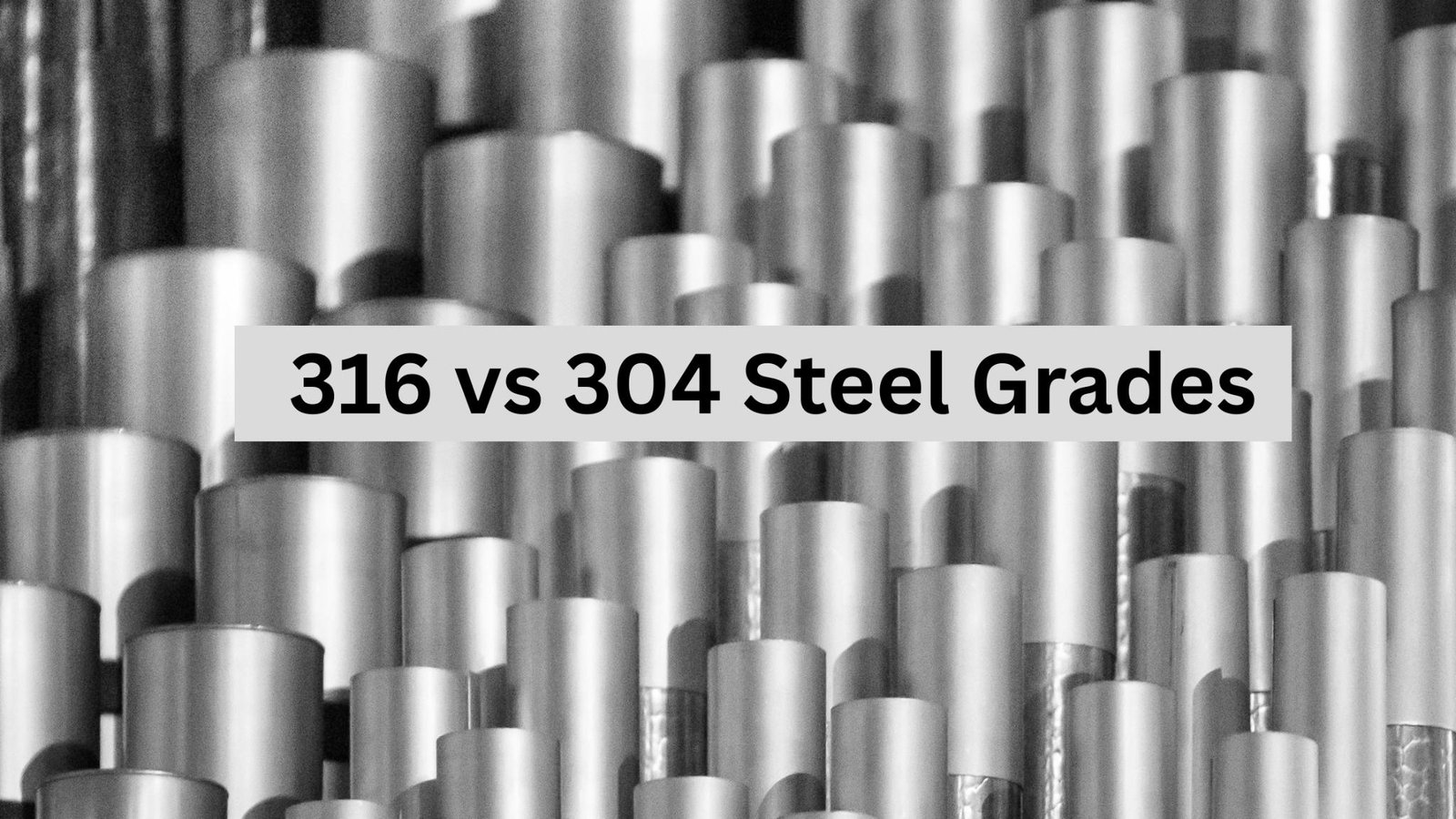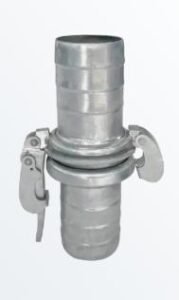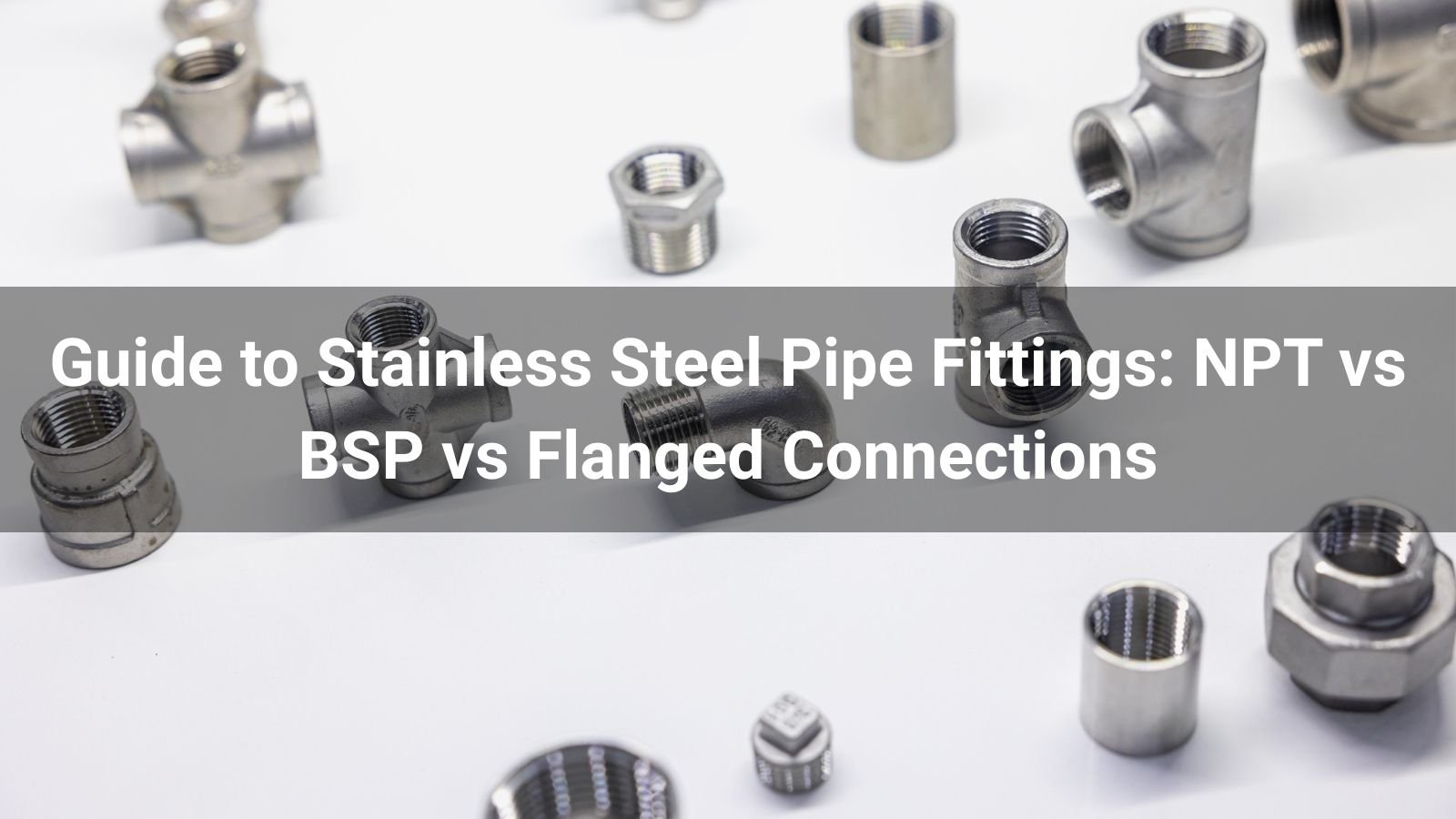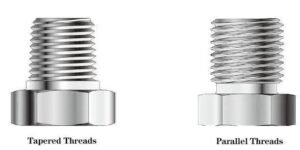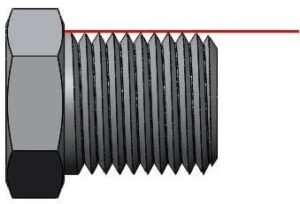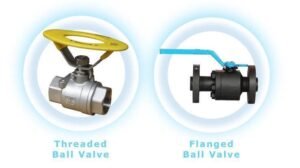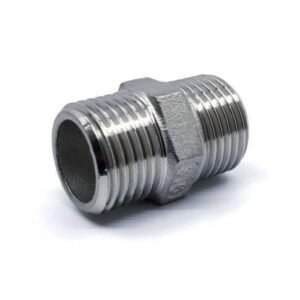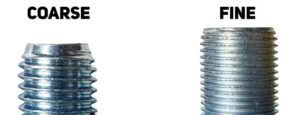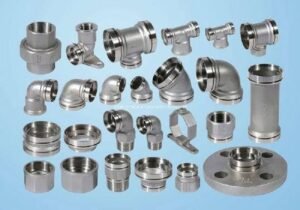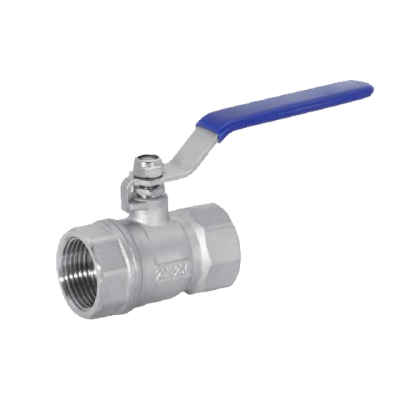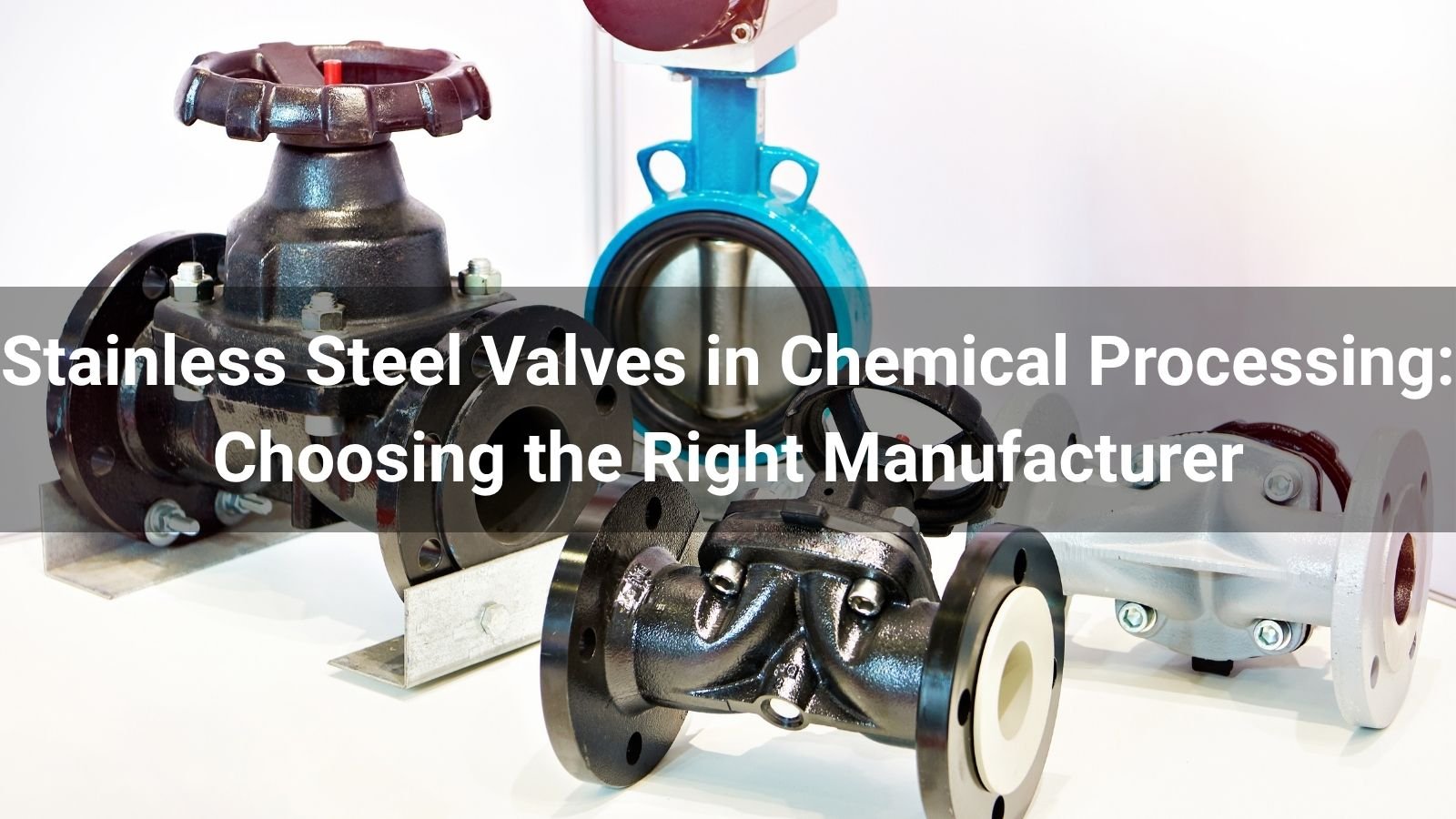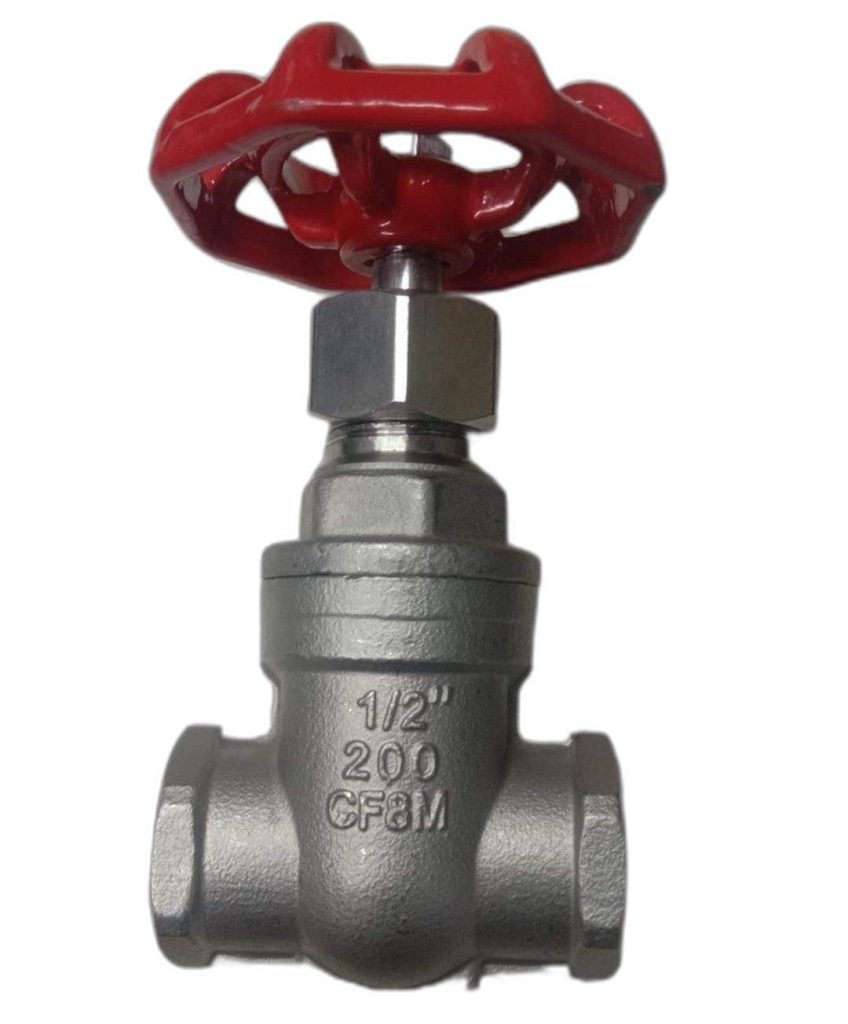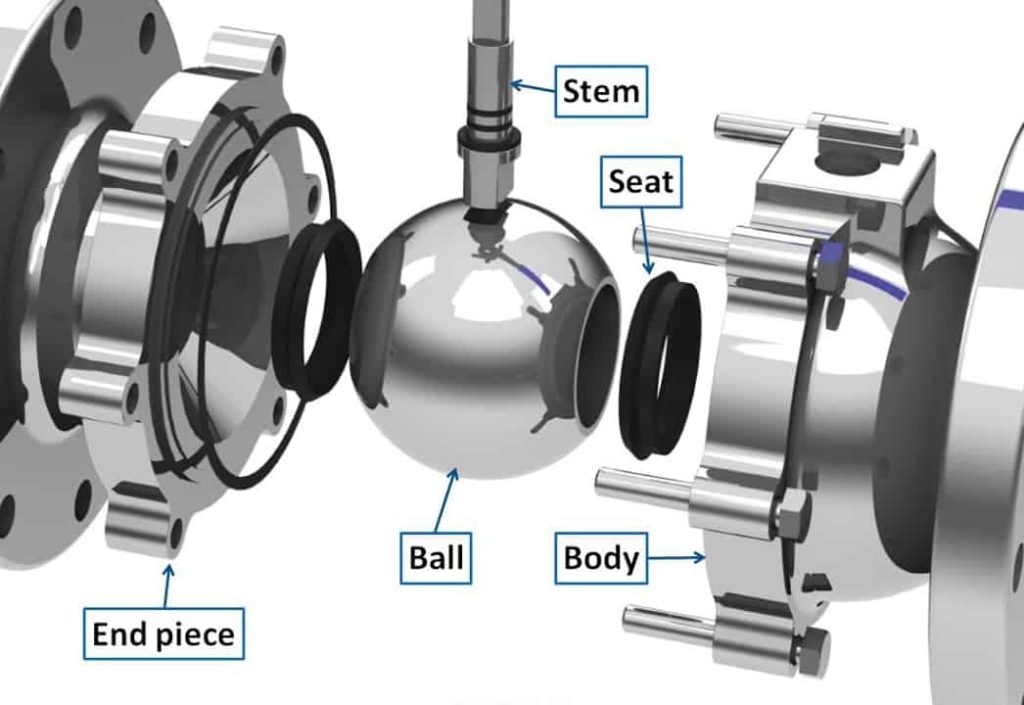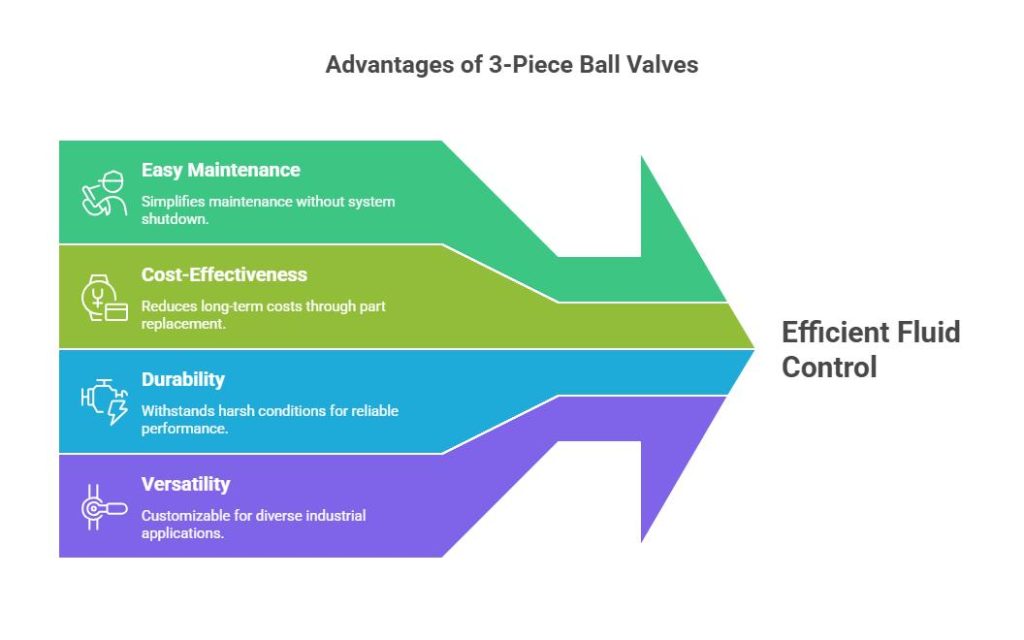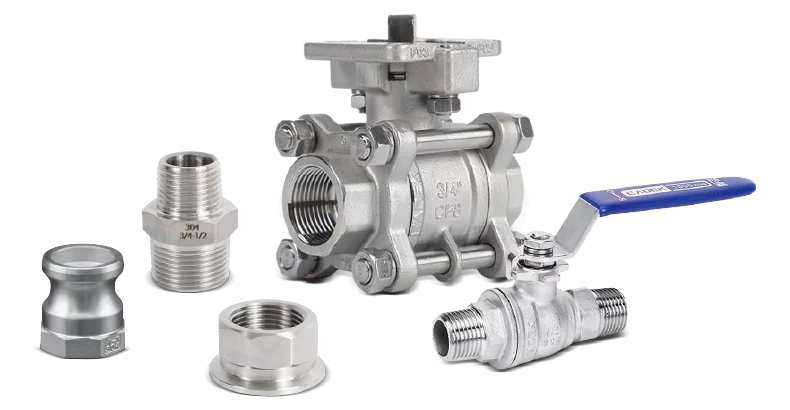كلاهما 316 and 304 steel grades are popular choices when it comes to valves and fittings in piping systems. Both are tough, rust-resistant, and durable. However, they have specific use cases where each of them excels with their unique properties.
So, if you’ve ever asked the question, “Is 304 better than 316 stainless steel?” The truth is, it’s not a one-size-fits-all answer. It really comes down to the environment and the demands of your project. In this guide, we’ll walk through the differences in plain, simple terms so you can pick the right one with confidence.
Understanding 304 and 316 Stainless Steel Grades?
Stainless steel is a steel alloy that’s designed to fight off rust and staining. Its secret weapon is chromium. When chromium is added, it forms a super-thin, invisible layer on the surface that shields the metal underneath. Add some nickel to the mix, and you boost its strength and give it a smoother and more polished finish.
In valves and fittings, the two most popular grades are 304 and 316. They might look the same to the eye, but the real difference is in their chemical makeup.
304 stainless steel is made from iron with around 18% chromium و 8% nickel. It’s strong, versatile, and does a great job resisting rust in most everyday situations. That’s why you’ll often see it in household plumbing and other general-use applications.
316 stainless steel starts with almost the same base as 304 but adds 2-3% molybdenum. That little extra ingredient makes a big difference, making 316 more resistant to chloride corrosion than 304. This makes it perfect for salty or chemical-heavy environments, which is the reason why it’s often recommended for marine applications.
In short, both are tough, reliable, and corrosion-resistant. But if your system is going anywhere near saltwater or aggressive chemicals, 316 is the safer choice.
316 Stainless Steel vs. 304 in Valves and Fittings: Why It Matters
The grade you choose for your project can have a big impact on how your system performs in the long run. Each grade has strengths that make it a better fit for certain situations.
Take 316 stainless steel, for example. It’s designed to handle environments where other metals would quickly give up. In marine applications, it stands strong against constant saltwater exposure.
In chemical plants, it can cope with aggressive substances that would eat through other materials. It’s also a trusted choice in food and pharmaceutical production, where surfaces must stay smooth, easy to clean, and resistant to corrosion to meet strict hygiene standards.
304 stainless steel, on the other hand, is perfect for less demanding environments. It’s a reliable choice for general plumbing, indoor water systems, and structural fittings that don’t face harsh chemicals or salty conditions.
It’s also a reliable choice for fixtures and assemblies that need to look good and perform without the extra cost of 316.
316 vs 304 Stainless Steel: Key Differences Between Them
When you put them side by side, 304 and 316 stainless steel look almost identical. The main difference lies in their chemical composition.
Here’s a closer look at 316 vs 304 stainless steel properties that matter when choosing valves and fittings.
الجماليات
Both grades have the same clean, silvery finish most people picture when they think of stainless steel. They’re so alike in appearance that you can’t tell them apart just by looking. This is why you should never make a choice based on looks alone. It’s the chemical properties that determine performance.
Chemical Composition
Here’s how 304 and 316 differ in terms of their chemical composition.
| Element
|
فولاذ مقاوم للصدأ 304 | 316 فولاذ مقاوم للصدأ |
| Chromium | 18% | 16% |
| Carbon | ≤0.08% | ≤0.08% |
| Nickel | 8% | 10% |
| Molybdenum | None | 2-3% |
مقاومة التآكل
Here’s where 316 pulls ahead. Thanks to its 2-3% molybdenum, it offers a significantly higher corrosion-resistant property than 304. If your system is going anywhere near saltwater, brine, or aggressive chemicals, 316 is the safer choice for the long haul.
Temperature and Pressure Tolerance
Both grades stand up well to heat and pressure, making them reliable for demanding applications. 316 has a slight edge, typically rated up to 3000 psi compared to about 2500 psi for 304, and holds its strength a bit better at very high temperatures.
Cost Comparison
As you might have guessed, 304 is more affordable. If you don’t need extreme corrosion resistance, it delivers excellent value. However, the higher cost of 316 often pays for itself in environments where a failure would be far more expensive than the upfront cost.
Weldability and Machinability
Both can be welded successfully, but 304 is usually easier to work with. It machines smoothly and requires less effort. The added molybdenum in 316 makes it slightly more difficult to machine, meaning it requires more time, effort, though skilled fabricators can handle both without trouble. For jobs where fabrication speed matters, 304 often wins.
How to Tell the Difference Between 304 and 316 Stainless Steel
At a quick glance, 304 and 316 look almost identical. Both have that smooth, shiny stainless steel finish, so you can’t tell them apart just by looking. The real difference is in their chemical properties, and that’s not something the naked eye can spot.
If you want to be certain, lab testing is the most reliable option. Methods like X-ray fluorescence (XRF) or spectrochemical analysis can identify the exact composition, including the molybdenum that sets 316 apart. This is how manufacturers and inspectors confirm the grade for critical applications.
When lab testing isn’t possible, check for markings and certifications. Many valves and fittings have the grade stamped or etched on them. Good suppliers will also provide mill test certificates (MTCs) or similar documentation to prove the material’s composition and compliance with standards. This is why you must choose the right manufacturer.
And here’s a simple rule – always ask questions. Ask the supplier about the grade, see the certification, and find out where the material was sourced. Reliable manufacturers and suppliers won’t hesitate to give you clear answers and paperwork to back it up. If they’re confident in their products, they’ll be happy to prove it.
Pros and Cons of Each Stainless Steel Grade
When people ask, ‘When it comes to stainless steel 304 vs 316, which is better?’ We always tell them that it all depends on their priorities. It’s as simple as that.
But to help you understand this better, here’s a quick breakdown of the strengths and trade-offs for each grade.
فولاذ مقاوم للصدأ 304
Pros:
- Affordable compared to 316, making it cost-effective for many projects
- Good corrosion resistance in most indoor and mild outdoor environments
- Excellent strength and durability for general use
- Easier to machine and fabricate, which can lower manufacturing costs
Cons:
- Less resistant to chlorides, so not ideal for marine or high-salt environments
- May show signs of pitting corrosion in more aggressive conditions
- Not as suitable for applications involving strong chemicals
316 فولاذ مقاوم للصدأ
Pros:
- Exceptional resistance to chlorides and many harsh chemicals
- Reliable in marine, chemical, and other challenging environments
- Long lifespan in demanding conditions, reducing the need for replacements
- Maintains performance well under extreme temperatures
Cons:
- Higher cost due to the added molybdenum
- Slightly harder to machine, which can increase fabrication time and expense
- It may be unnecessary for simple indoor or low-exposure projects
Choosing the Right One for Your Project
Choosing the wrong grade could lead to premature wear, costly maintenance, or even system failure
Now, let’s talk about how you can decide which option is best for you and your project. Selecting between 304 and 316 stainless steel starts with understanding your project’s needs.
The right choice will balance performance, cost, and safety. Here are some factors to bear in mind when choosing:
Consider the Environment
Think about where your valves and fittings will be used. Will they face saltwater, constant moisture, or strong cleaning agents? If yes, then use 316 because it’s built to handle tough, corrosive conditions. If the setting is more controlled, like kitchen sinks, heat exchangers, or a fresh water environment, 304 will usually do the job just fine.
Know What’s Flowing Through the System
If your system carries chlorides, harsh chemicals, or other corrosive substances, 316 is the safer option. For clean water or non-corrosive fluids, 304 is a good option.
Budget vs. Performance
Of course, there are times you will need to put cost into consideration. 304 is generally the more affordable choice and works well for many indoor and low-risk applications. 316 costs more but provides extra protection that can prevent expensive downtime or replacements.
Think Long Term
If you want equipment that will last for decades in a demanding environment, 316 may be worth the higher upfront cost. For short-term or temporary setups, 304 can be the more practical choice.
When in Doubt, Choose 316
If you’re unsure about the exact conditions your system will face, 316 gives you a built-in safety margin. For example, ASME B16.34 specifies wall thickness requirements for valves, but material selection remains a critical factor in ensuring reliability.
Where Each Grade Excels: Industry Applications
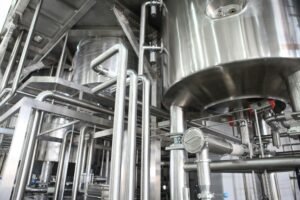
Thinking of the industrial applications of these two grades of stainless steel? You’re not out of the way.
When it comes to picking between 304 and 316 stainless steel, the best choice often depends on the industry and the demands of the job. Each grade has strengths that make it a better fit for certain situations.
For instance, in the pharmaceutical industry, 316 stainless steel is the standard for valves and fittings. Its high resistance to chemicals and chlorides, combined with a smooth, easy-to-clean surface, helps meet Good Manufacturing Practice (GMP) requirements. In sterile environments, corrosion resistance isn’t just about longevity but about ensuring product purity and safety.
For the marine and offshore industries, 316 is also the clear winner. The molybdenum in its makeup gives it strong protection against pitting and crevice corrosion, even with constant exposure to saltwater. This makes it ideal for seawater pipelines, ship systems, and offshore platforms.
On the other hand, indoor HVAC systems و general building plumbing usually use 304 stainless steel. These applications don’t face aggressive conditions, so 304 provides more than enough durability at a lower cost. Its easier machinability can also speed up production for larger projects.
In food and beverage manufacturing, both grades have a place. 316 is chosen for handling salty or acidic ingredients, while 304 works well in less corrosive processing environments.
**Quick Selection Tips
- Choose 316if your project involves saltwater, chemicals, or extreme weather.
- Choose 304if your project is indoors or in mild outdoor environments and you want to save on cost.
Final Thoughts
Choosing between 304 and 316 stainless steel isn’t just a technical decision; it’s one that affects performance, reliability, and long-term value. The right choice can mean the difference between years of trouble-free service and costly replacements.
So, when making your decision, think beyond the initial price tag. Consider the environment your valves and fittings will face. Think about the substances flowing through them and the performance you expect over time.
Matching the material to these needs will ensure your system stays safe, efficient, and durable for years to come.
الأسئلة الشائعة
304 vs 316 stainless steel, which is better?
Neither is universally “better.” 316 has higher resistance to corrosion, especially in saltwater or chemical environments, while 304 is more cost-effective and performs well in less aggressive conditions. The best choice depends on your application.
How to choose 316 stainless steel valves for food processing?
Look for valves that meet food-grade certifications and are compliant with hygiene standards like GMP or FDA guidelines. Ensure they’re easy to clean, resistant to the cleaning chemicals you use, and documented with proper material certifications from reliable suppliers.
Is 304 stainless steel suitable for indoor piping?
Yes. 304 is a solid choice for indoor water systems, HVAC, and other applications where it won’t be exposed to high salt levels or harsh chemicals. It offers good corrosion resistance and durability at a lower cost than 316.
